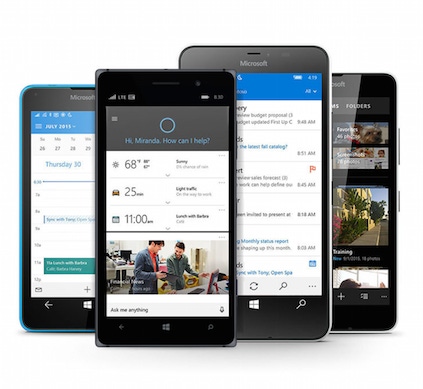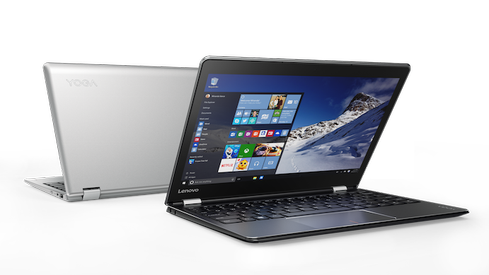Windows 10 Mobile Upgrades Arrive For Older Smartphones
Microsoft has started to roll out the Windows 10 Mobile upgrade to smartphones running older versions of Windows Phone.


Windows 10 PCs, Tablets, Hybrids Take MWC Spotlight
Windows 10 PCs, Tablets, Hybrids Take MWC Spotlight (Click image for larger view and slideshow.)
Microsoft has officially begun the process of upgrading older models of Windows Phone to the Windows 10 Mobile operating system. A limited number of existing handsets will be eligible for upgrades starting March 17.
The news arrives following a delay of Windows 10 Mobile announced in December. Microsoft had promised to bring its new mobile OS to existing handsets by year's end, but broke the commitment for unknown reasons.
Even with Thursday's announcement, some users will have to wait before they can download the upgrade. The list of supported models includes some Windows Phone 8.1 devices, and doesn't include some devices eligible to run the OS in the Windows 10 Mobile Insider program.
[IDC: Windows will beat Android and iOS in detachable tablets.]
Microsoft says availability of the Windows 10 Mobile upgrade for devices running Windows Phone 8.1 "will vary by device manufacturer, device model, country or region, mobile operator or service provider, hardware limitations, and other factors," the company reported in a blog post.
With this upgrade Microsoft is supporting the following devices: Lumia 1520, 930, 640, 640 XL, 730, 735, 830, 532, 535, 540, 635 (1GB), 636 (1GB), 638 (1GB), 430, 435, BLU Win HD w510u, BLU Win HD LTE x150q, and MCJ Madosma Q501.
The company takes a deeper dive into upgrade eligibility on its Windows 10 specifications page. For example, a phone must be running Windows Phone 8.1 GDR1 QFE8 or later and have 1.4GB space to download the file.

Are you prepared for a new world of enterprise mobility? Attend the Wireless & Mobility Track at Interop Las Vegas, May 2-6. Register now!
If you're unsure whether your phone qualifies, you can find out by downloading the Windows 10 Upgrade Advisor app from the Windows Store. The app is designed to check if an update is available for a specific device. If so, it helps free up space for the download.
After the upgrade, Windows Phone 8.1 devices will not be able to access Windows 10 features like Windows Hello due to a lack of hardware compatibility.
Speech recognition may vary depending on device microphone, for example, and Continuum is only available on premium devices. Windows Hello requires a specialized infrared camera or fingerprint reader that supports the Window Biometric framework.
On the flip side there are some features within Windows 8 that will be changed or deleted after the Windows 10 upgrade. The Me Tile and Me Card are no longer supported, "Hey Cortana" may no longer be available on some devices, and certain enterprise features like Data Protection Under Lock will no longer be available.
There are already several new devices running Windows 10 Mobile already on the smartphone market. One of these, the HP Elite x3, is a business-oriented device intended to bring Windows 10 smartphones to the enterprise.
HP is marketing the high-end Elite x3 to be a smartphone, desktop, and laptop through the power of Continuum and accessories built for the device. Continuum, one of the most prominent features of Windows 10, enables users to turn their smartphone into a PC by plugging their phone into a monitor.
At CES 2016 and MWC 2016, several smartphone makers showcased new devices, including laptops, smartphones, and tablets built to run Windows 10 and Windows 10 Mobile. These items broaden the availability of Microsoft's new mobile OS.
The OneTouch Fierce XL from Alcatel, and the Liquid Jade Primo from Acer, are two devices added to the Windows 10 Mobile lineup. Both come with Cortana, Microsoft Edge, Microsoft Office, and other features built into Windows 10.

About the Author(s)
You May Also Like
How to Amplify DevOps with DevSecOps
May 22, 2024Generative AI: Use Cases and Risks in 2024
May 29, 2024Smart Service Management
June 4, 2024







